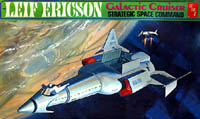


There is some good information about spacecraft crews here, and futuristic sidearms here. There is also a good description of life on a wet-navy vessel here.
The amazing Robert Lee Merrill of Hungry Lizard Studios has some thoughts on what the well dressed crew member will wear. Click on the thumbnail for a larger image.
Don't forget the accessories.
From THE ADVENTURES OF SPACE MIDSHIPMAN LANCER SCOTT
An equipment belt was strapped to his waist, and from the right side hung a SonicWhip, neatly tucked in its paralon holster. The slender, L-shaped form belied its deadliness as a weapon. Within a planet atmosphere, there was nothing more lethal than a Sonic Whip. The equipment belt also contained a small transceiver, emergency food and medical supplies, a small repair kit, and several other items, all designed to help its wearer meet and overcome almost any possible emergency situation.
...
The voice of It. Evans crackled in Lance’s earpiece. "If you get in trouble, or if you find the men, radio the rest of us the nature of your situation, and then activate the homing beacon with one of your transceivers."
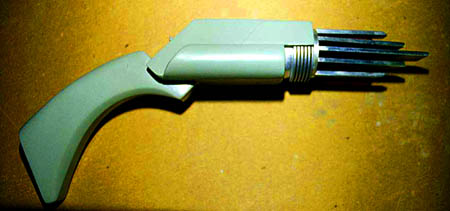 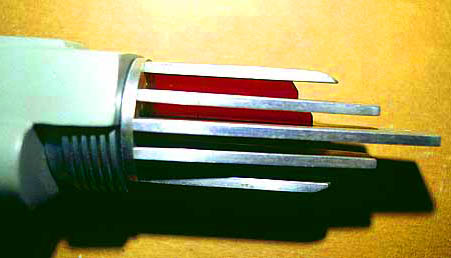 |
Sidearms are an important part of landing party equipment. The canon sources mention "sonic whips", which sound like a kind of cocktail. The weapon imaged above is from the Classic Star Trek episode "A Taste of Armageddon" (they were later re-dressed for use as Klingon Disruptors). Their main attractive feature is the tuning-fork like prongs, implying a sonic weapon. However, canon or not, protagonists in science fiction of that era were generally armed with the non-lethal "Stunners" or the exceedingly lethal "Blasters". Some of Larry Niven's science fiction featured "sonic stunners", so that might kill two birds with one stone. |
|
Click on the image for the larger version.
|
As for blasters, Robert Merrill has a sexy concept. His laser handgun is powered by individual energy capacitors. Sort of an energy-beam six-shooter (actually a ten-shooter). Capacitors can be re-charged at leisure, but a handgun can be rapidly re-loaded from a bandoleer of charged caps. And the capacitors can be made into jury-rigged explosives. Anything with that much electricity in it will blow up with plenty of force. |
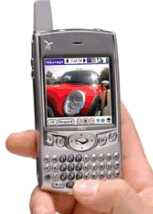 |
The story also mentions a "transceiver", which is apparently a glorified walky-talky. Audio only, how quaint. There were communicators that did video as well as audio in Forbidden Planet, Space 1999, and Johnny Quest. And in the classic novel The Mote In God's Eye, the communicator was also a pocket computer. Of course, the future is today. Pictured to the left is the Handspring Treo, which is a pocket-computer/cell-phone combination. It is also a digital camera that will also do digital video. I can picture a special vest pocket on the uniform for such a device, with the camera facing outwards, and a built-in cloth sleeve to route the earphone wire up the shoulder and into the ear. Another interesting feature of the Handspring line was the late lamented "Springboard" slot. This functioned much like the USB port on your computer, the one with the bewildering plethora of gadgets to plug in. So take your Treo, plug in the sensor module, and suddenly you have a Tricorder. There would be modules for geological survey, medical diagnostics, and GPS navigation (which would revert to "dead reckoning" if you were stuck on the ground when the Leif left orbit). |
 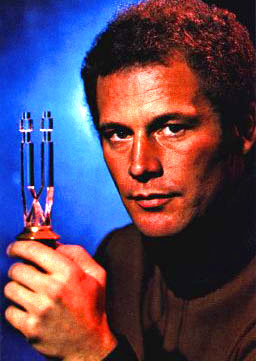 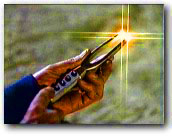 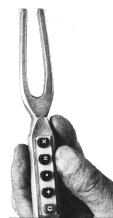 |
What sort of tools will the engineers carry? The Fourth Doctor Who always carried his trusty multipurpose sonic screwdriver, while the 23rd Century scientist Varian from The Fantastic Journey used his Universal Tool. Which looks suspiciously like the tuning fork tool used by Rem the android in the TV series Logan's Run. There was also a "multitool" in the David Drake novel Rolling Hot. Magnetic Wrench, Star Trek
"That Which Survives"
(1969). Click for larger image
But when you get right down to it, most tools fall into one of two categories. They cut or they join. They subtract or add. Cutting tools include knives, chisels, lathes, saws, planers, and sanders. Joining tools include hammer and nails, screwdriver and screws, soldering gun and solder, socket wrench and bolts, arc welders, and glue. Taken to an extreme, the ultimate cutting tool would be capable of separating a piece of material along a line one atom thick, with a customizable cutting head. In his Known Space novels, Larry Niven invented the "variable sword". This was a handle that extruded a "monofilament wire" one molecule thick, stiffened by a force field. It would cut anything except fabric woven from monofilament or a General Products hull. Imagine a variable sword where one could alter the wire into any shape one wanted. An even better trick is one with a dynamic shape. A controller box would contain the blueprint of the desired shape. Place it next to the block of material and let the box locate itself relative to the block. Plug the cutter into the control box. Now as you wave the cutter through the block, the box will dynamically alter the blade so it automatically cuts the block according to the blueprint. Similarly, the ultimate joining tool would induce two objects to form atomic bonds where ever they touched. Call it an "atomic bonder". It would be a nice touch if the bonder could reverse the process, causing two joined objects to separate if required. Robert Merrill points out that there are other classes of tools: Diagnostic, Measuring, and Supportive. Diagnostic examples include multimeters and automobile engine timing lights. Measuring include rulers and calipers. Supportive include car jacks and clamps. He also points out that different types of tools are required by different types of workers. Damage Control Teams, Repair Squads, Maintance Crews, Refitters, Installers, and Artificers (never know what you're going to need built on a deep space mission). |